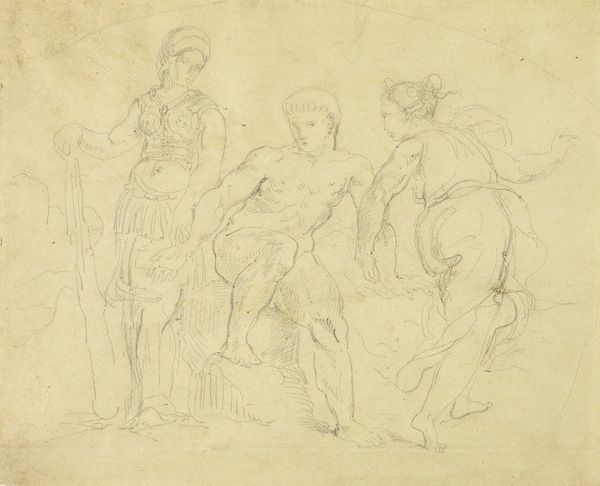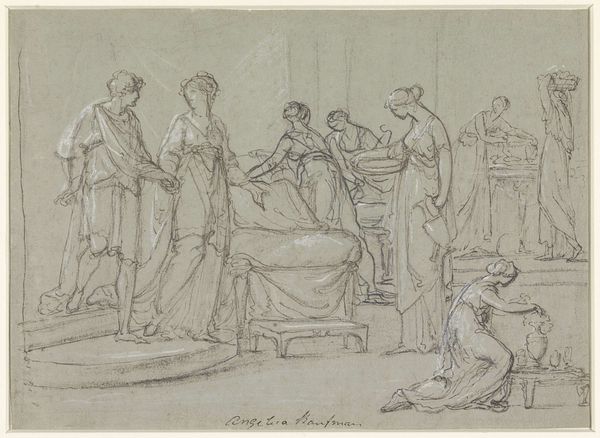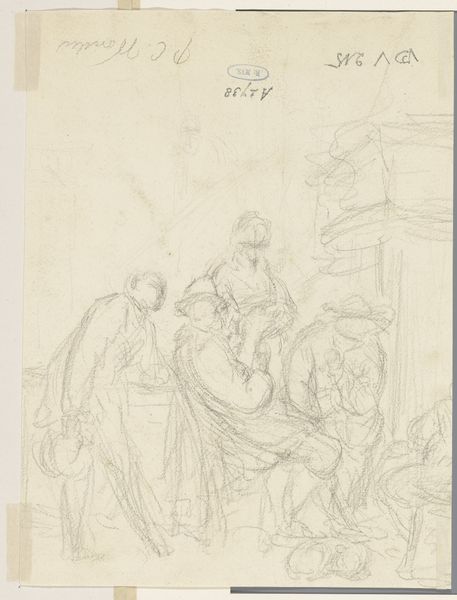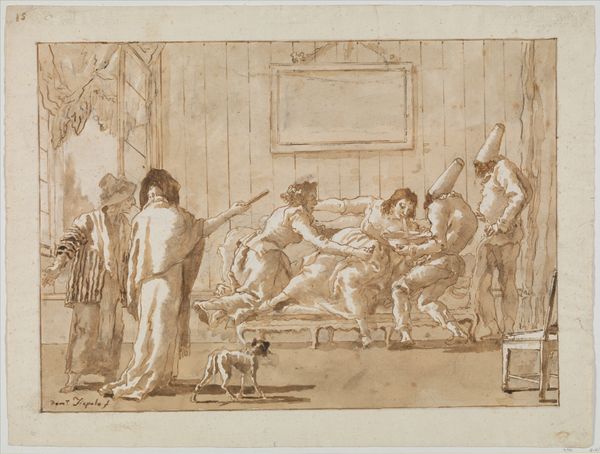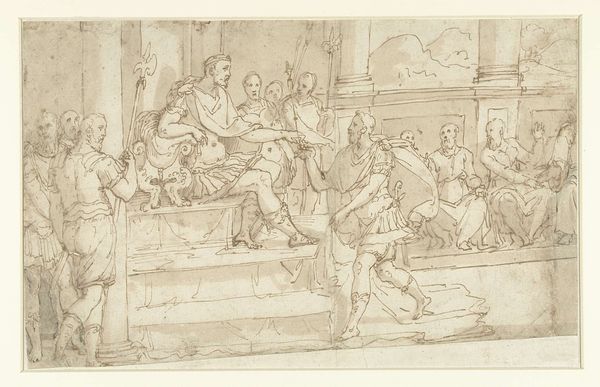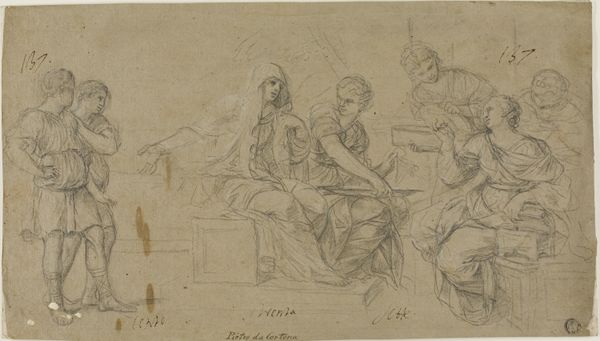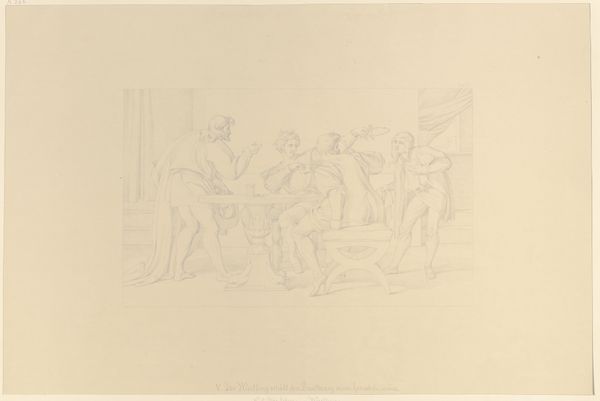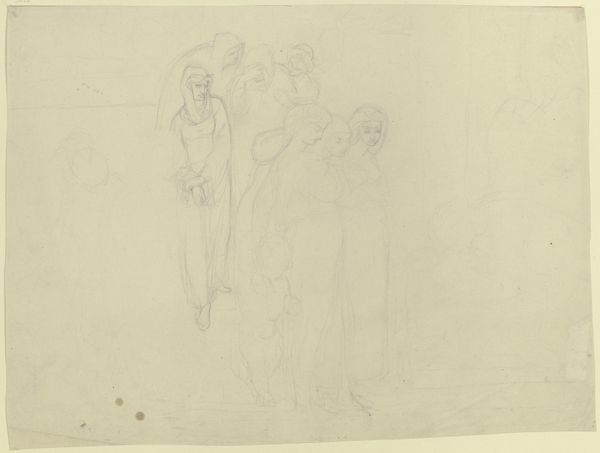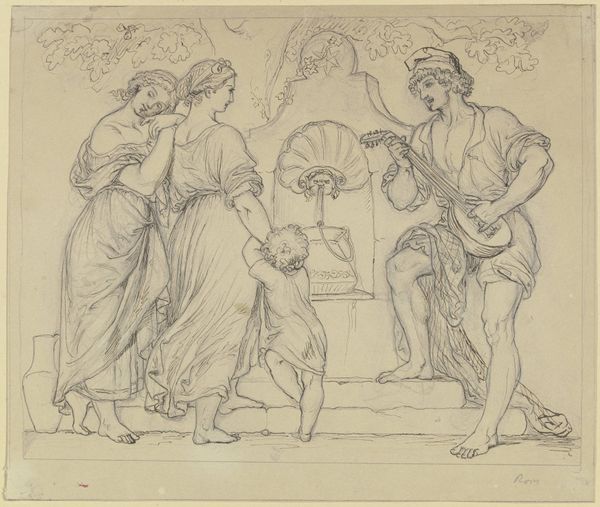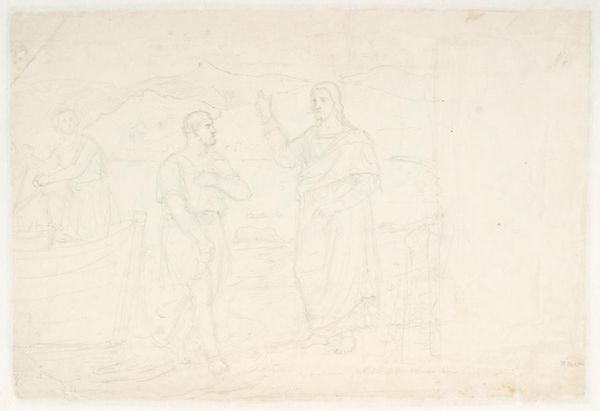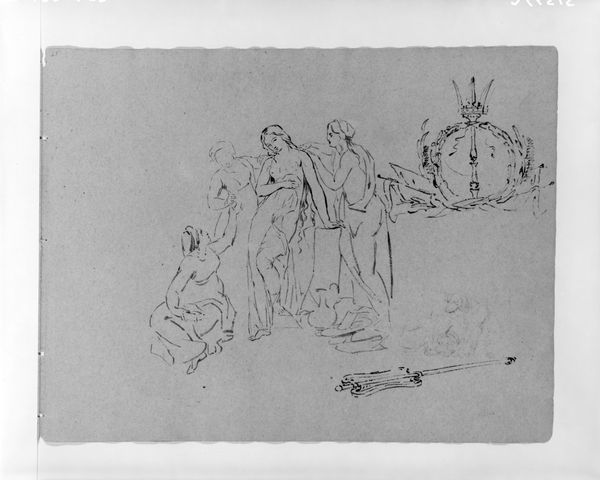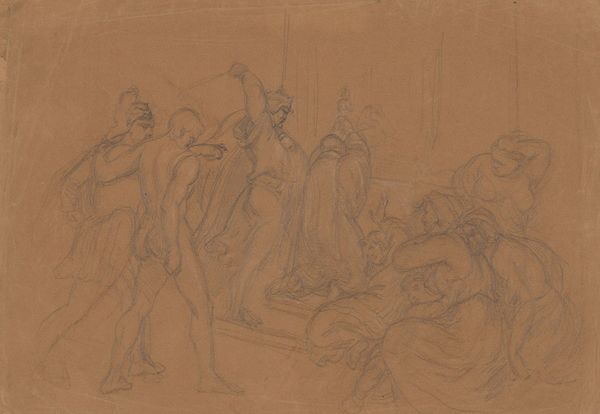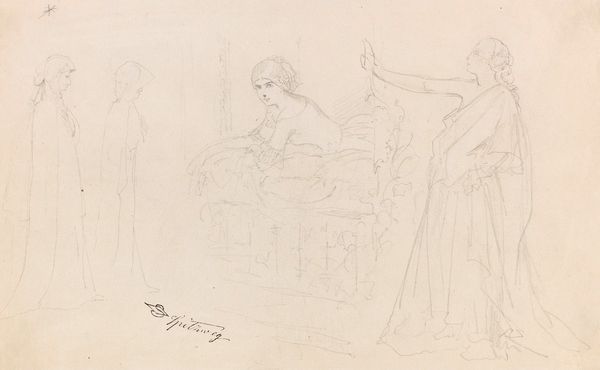
drawing, pencil
#
drawing
#
figuration
#
pencil
#
history-painting
Copyright: Public domain
Editor: So, this is Pierre-Narcisse Guerin’s drawing, Pyrrhus and Andromache, done in pencil. It has such a tense and dramatic feel. What exactly is going on here? Curator: The drawing captures a pivotal moment from Jean Racine’s tragedy “Andromaque,” which itself draws from classical Greek sources. We see Pyrrhus, the son of Achilles, seated, while Andromache begs him to spare her son. Now, think about this in the context of its time – the early 19th century. History painting, especially that which depicted virtuous actions from classical literature, was very popular. It had this intended purpose, almost a pedagogical one, for those who attended the salons, of educating them in morality, wasn’t it? Editor: Right, almost like a staged moral lesson? Is that why the figures are so clearly delineated and positioned, like actors on a stage? Curator: Precisely. Notice also how Guerin employs a neoclassical style, emphasizing clarity of line and form, inspired by ancient sculpture. But consider the political implications, especially during the Napoleonic era. How might depictions of power, supplication, and clemency, play into contemporary political narratives about heroism and governance? The drawing has this air of "great men" being central, a kind of visual rhetoric, doesn't it? Editor: Absolutely, now I’m wondering about who this artwork was really *for*, beyond just those moral lessons it’s peddling. What sort of statement does the work itself make when displayed in the Paris Salon? Curator: Well, remember, these Salons were hugely influential in shaping public opinion and taste. They played a vital role in both supporting and reinforcing the establishment's ideas about art. But how else could an artist make statements, even challenging ones, *through* that institution? Editor: Hmmm, so even when reinforcing established narratives, the very act of creating and exhibiting art introduces new layers of meaning into public discourse, whether intentionally or not. It becomes part of the story it tries to depict. Thank you, that puts the pencil to paper! Curator: Exactly. It’s fascinating to examine art not just for its aesthetic qualities, but as active player within society and its ongoing power struggles.
Comments
No comments
Be the first to comment and join the conversation on the ultimate creative platform.
